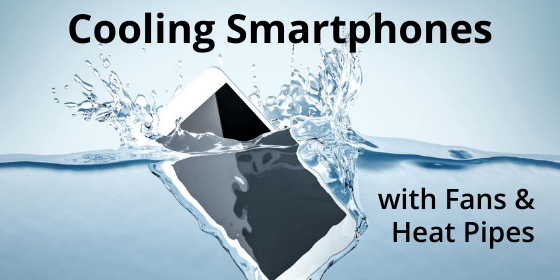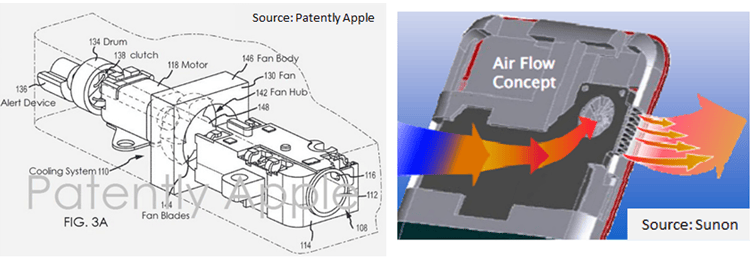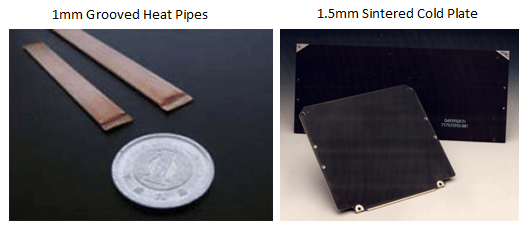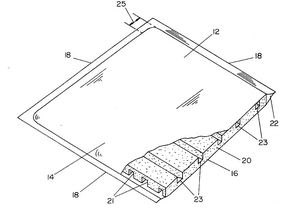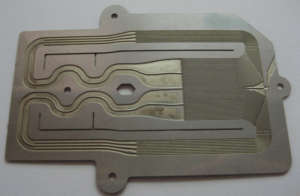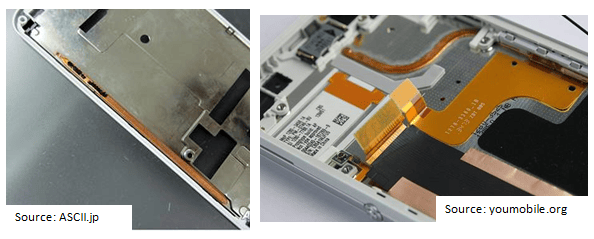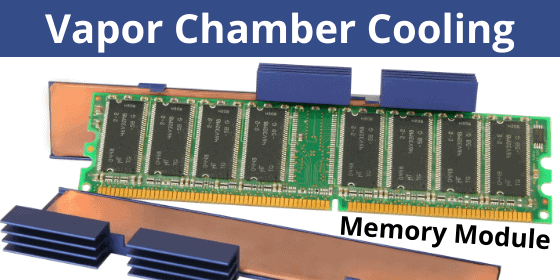Using Fans & Heat Pipes to Cool Smartphones
I recently read an interesting article that explored the practical reasons behind the use of different materials for smartphone enclosures: polycarbonate, glass, and metal. They included tactile preferences, radio attenuation, and surprisingly, thermal conductivity. While I’m pleased the mainstream press is touching on this issue, I’m sure the vast majority of smartphone users have no idea of the lengths to which engineers are going to keep these devices cool.
In addition to thermally aware power management algorithms used to scale back performance in the interest of lower temperatures, engineers are extending their thermal tool kit beyond EMI shields/spreaders and aluminum or graphite-carbon sheets to include the use of tiny fans and ultra-thin heat pipes to increase thermal efficiency.
In 2012, Apple submitted a patent application for a device that uses the phone’s vibrator motor to power a fan. While it’s yet to be implemented, the company is clearly devoting resources to tackling this problem. Additionally, Sunon is marketing a 3mm thick fan which it claims is ideal for smartphones. Given the early trend towards waterproofing hand held devices, further reducing air-flow, and the inherent problems with active cooling devices, I’m still a bit skeptical about this solution.
I’m much more enthusiastic about the renewed activity in designing micro-thin two phase heat spreaders. For decades, the market for heat pipes and vapor chambers was almost exclusively at the high end where powers and power densities were 50-100 watts and higher into kilowatts. To handle this type of power, thickness of the two phase device must usually be greater than around 2.5mm. Early products and technical development that were thinner include the following:
- 1980’s – Japanese heat pipe companies were selling grooved heat pipes at about 1mm while companies in the US were producing sintered wick two phase devices of 1.5mm for military applications.
- 1990’s – Thermacore patent for thin-flexible heat pipes using plastic coated metal foil sheets in combination with a porous foam. Thickness in the 1mm range.
- 2000’s – Celsia etched micro loop vapor chamber as thin as 0.7mm.
Within the last year and a half, NEC and Sony have both introduced smartphones using an ultra-thin heat pipe. Reported to be in the 0.6mm range at the thinnest point, these two phase devices spread and transport heat from the main processing unit. Presumably this was done to implement slightly more liberal power management techniques as well as to reduce enclosure temperature while still allowing the quad-core Snapdragon processor to perform at near peak conditions. Weight gain from switching from graphite-carbon must have seemed an acceptable trade-off.
So, where does the market stand for these products today? Most handheld OEMs are pushing the market to move to thinner solutions. Just a few years ago 1.0 to 1.5mm was considered thin but still too thick for the consumer market. Now we’re seeing commercialized, high volume products approaching 0.5mm.
Technical papers presented on the topic show normal materials HPs and VCs made from copper, getting to 0.6mm and alternative materials going to 0.5mm and below. Pi-Mems in Santa Barbara is doing interesting work with etched Titanium as thin as 0.5mm. The strength of the titanium and it’s compatibility with water make a good combination to get to thinner structures. Additionally, The University of Colorado under Dr. Lee is miniaturizing the use of metalized plastics resulting in 0.25mm thick flexible vapor chambers. The challenge of these ultrathin structures is the pressure drop in the vapor causing high thermal resistances compared to their thicker cousins.
As with any fast moving technologies the product designers at the OEMs are in a race to move the technology forward. This drives the development of supporting technologies trying to capture these dollars. For main stream applications in 2015, 0.6mm thick, flattened copper water heat pipes are going to be the new standard. By the following year, I’m sure it will be even thinner.
Celsia is a custom heat sink manufacturer using vapor chamber and heat pipe technology. We specialize in: heat sink design, heat sink proto, heat sink manufacturing, heat pipes, vapor chambers, custom heat pipe wick materials.

